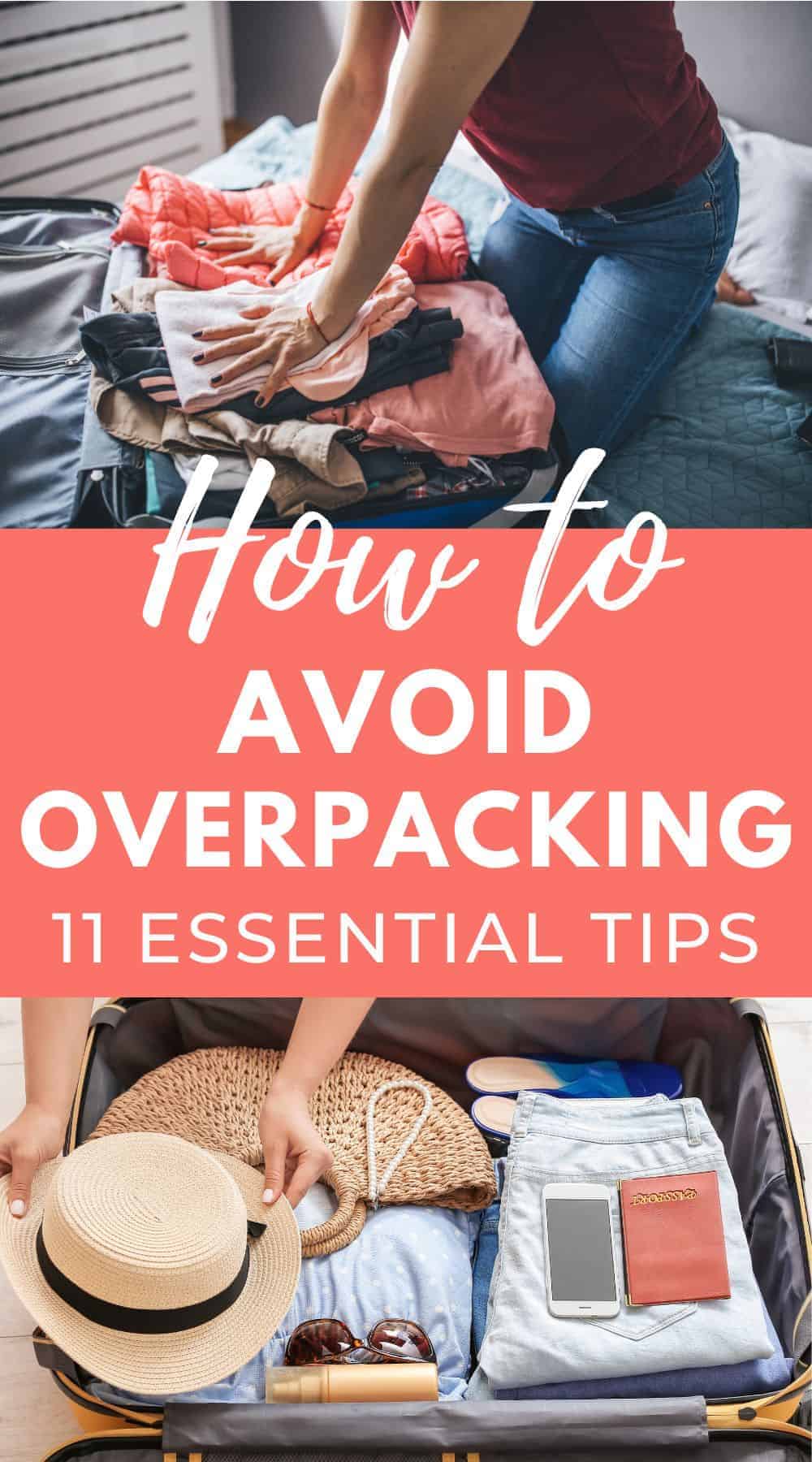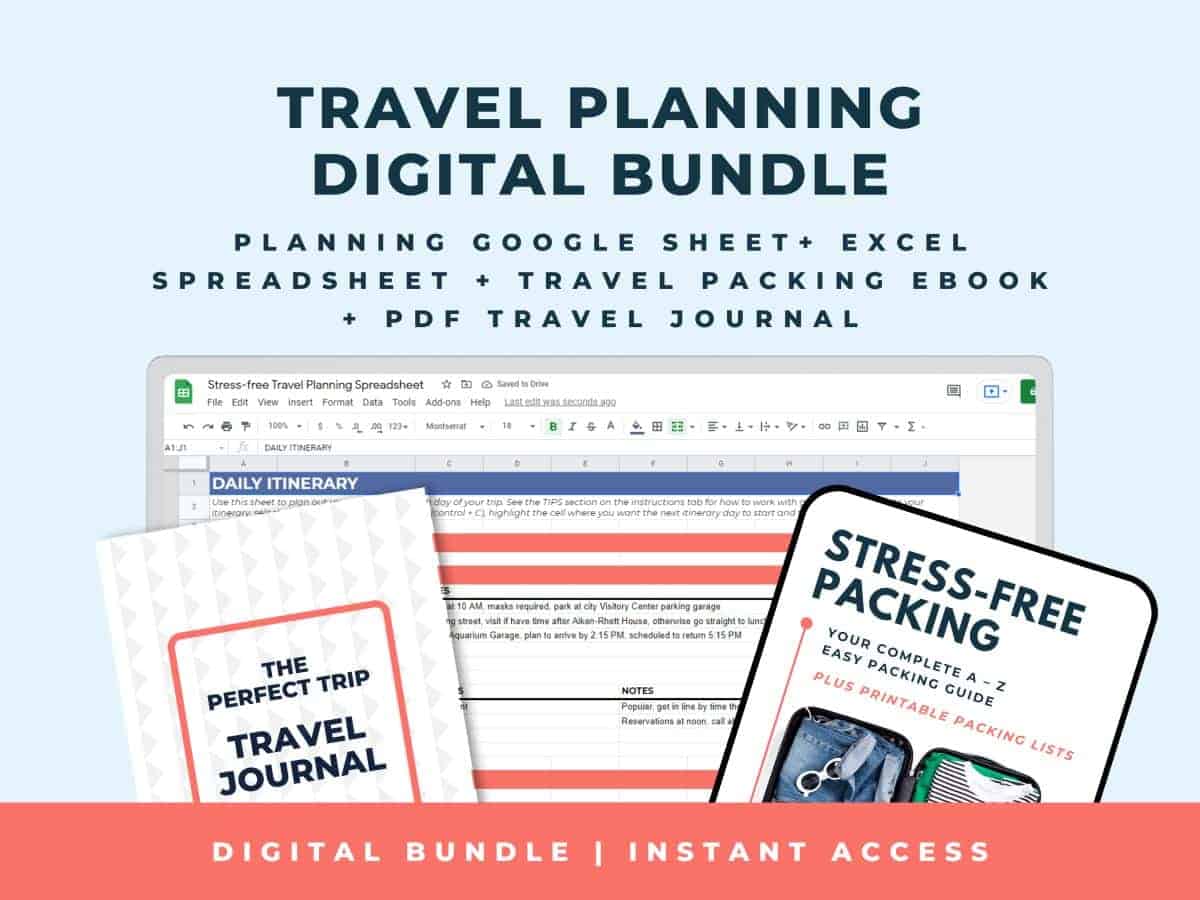How Not to Overpack: 11 Essential Tips
Weighed down by too much luggage? Overpacking is a common travel pitfall. This article will share practical tips to help you learn how not to overpack. You can master the art of packing lighter. Don’t worry. You will still bring enough to enjoy your trip just without the extra baggage.
Key takeaways
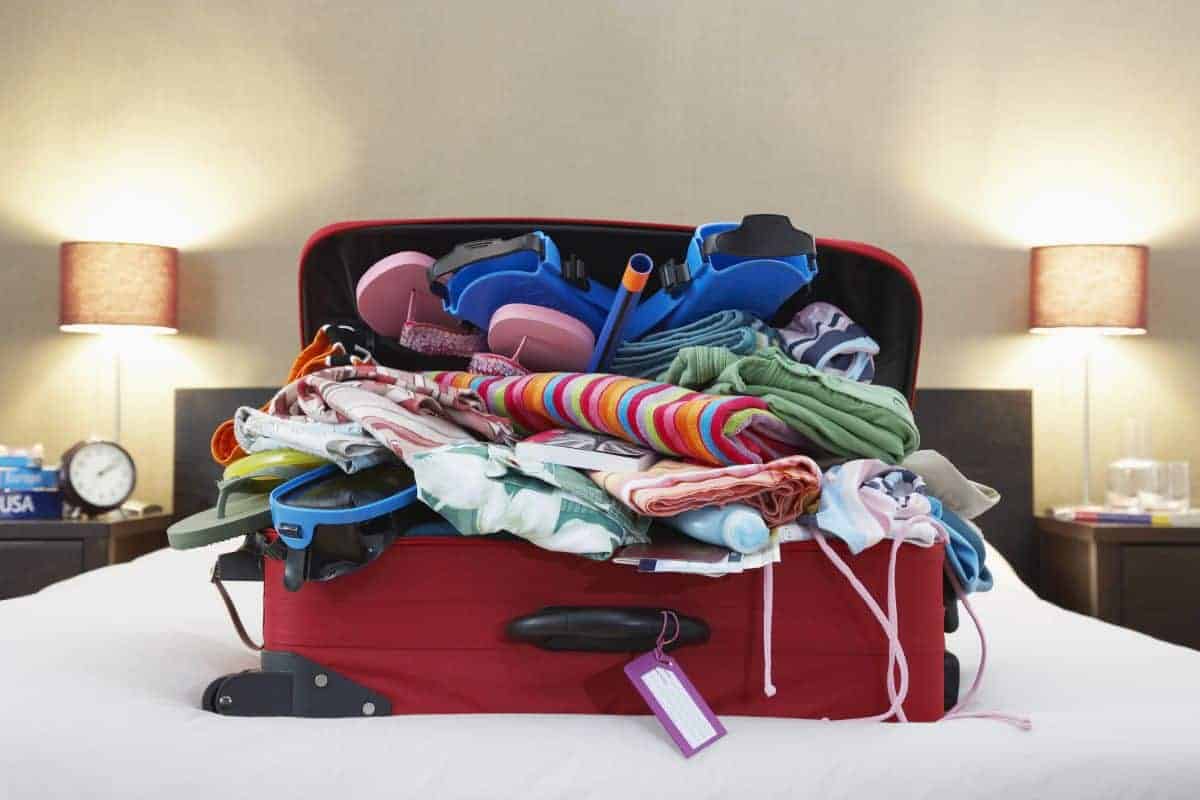
Embrace the spirit of experimentation
When packing your suitcase, think of it as an experiment or a game—you’re trying to see how little you can pack without causing issues for yourself while you travel. If you pack too little, don’t worry; the world won’t end.
Choose versatile garments that can be used in several ways or coordinate with many other items you’re packing. Plan out your combinations before you pack. Create outfits with the clothing you’ve chosen to see how many days you can cover.
Less is more when packing, and traveling is an ideal opportunity to try new things. I encourage you to be adventurous with your packing choices. Go ahead and challenge yourself to pack lighter and smarter.
I wasn’t sure if I could pack for a two-week national park road trip with just a carry-on and a backpack, but I had great success. What a confidence boost! You can read all about packing for that trip here: What to Pack for Yellowstone in the Spring.
Limit the size of your bag
Choosing the right bag size is a crucial and practical first step to avoid overpacking. Starting with a smaller bag encourages you to prioritize your travel essentials and reduces the temptation to fill empty space with unnecessary items.
If you want to travel with only a carry-on, make sure you thoroughly review the airline’s luggage policies. If you’re checking luggage, then limiting the size of your bag will be up to you.
Remember that by taking fewer items, you can move around more freely. A smaller bag also means quicker packing and unpacking.
Create a packing list ahead of time and stick to it
Creating a detailed packing list well ahead of time is essential to making sure you pack everything you need. (Notice that I said need and not want!)
Reviewing your daily planned itinerary is a great place to start with building a fresh packing list.
- List the things you’ll need for each day.
- Cross out any duplicates.
- Resist the urge to add extras once your list is set.
Of course, if you realize you forgot to include something on your list that you know you will need, by all means, add it to the list. But you know the difference between necessities and items you’re adding just to fill space.
Update your list after returning home to pack more efficiently next time. Make a note of any items you didn’t use to streamline your packing.
TIP: Use a travel packing list spreadsheet to keep track of everything you need for your trip.
Prefer pencil and paper? Grab the printable blank packing lists.
Minimize your toiletries
Downsizing toiletries can save significant space and weight in your luggage, and it’s absolutely necessary when packing toiletries for carry-on.
Here are a few tips:
- Choose multitasking products that serve more than one purpose. For example, a moisturizer with SPF not only saves space but also simplifies your routine.
- Minimize packaging waste by decanting your favorite products into reusable containers rather than purchasing separate travel-size versions each time you travel.
- Purchase when you arrive. Consider buying basic toiletries at your destination. This works well if you are traveling to a location where products are easily accessible and if you’re traveling long-term.
- Choose solid toiletries like bar soap, shampoo bars, and solid lotions, which are leak-proof and compact, making them ideal for travel.
- Use samples and freebies from the dentist or beauty subscriptions. They are already in compact packaging and likely include enough product for your trip.
Stop bringing things “just in case”
To refine your packing list, firstly, think critically about your destination and planned activities. Will you have the chance to wash your clothes? Is it likely you’ll find stores where you can easily buy essentials?
You’ve already created your packing list, so you know what you absolutely need. By focusing on what you do need rather than what you might need, you maximize the space in your suitcase and make your travel lighter.
For trips of longer than a week, my spouse and I often book accommodations with laundry facilities. At the very least, I will pack some Tide sink packs so that we can handwash some of our socks and underwear partway through the trip.
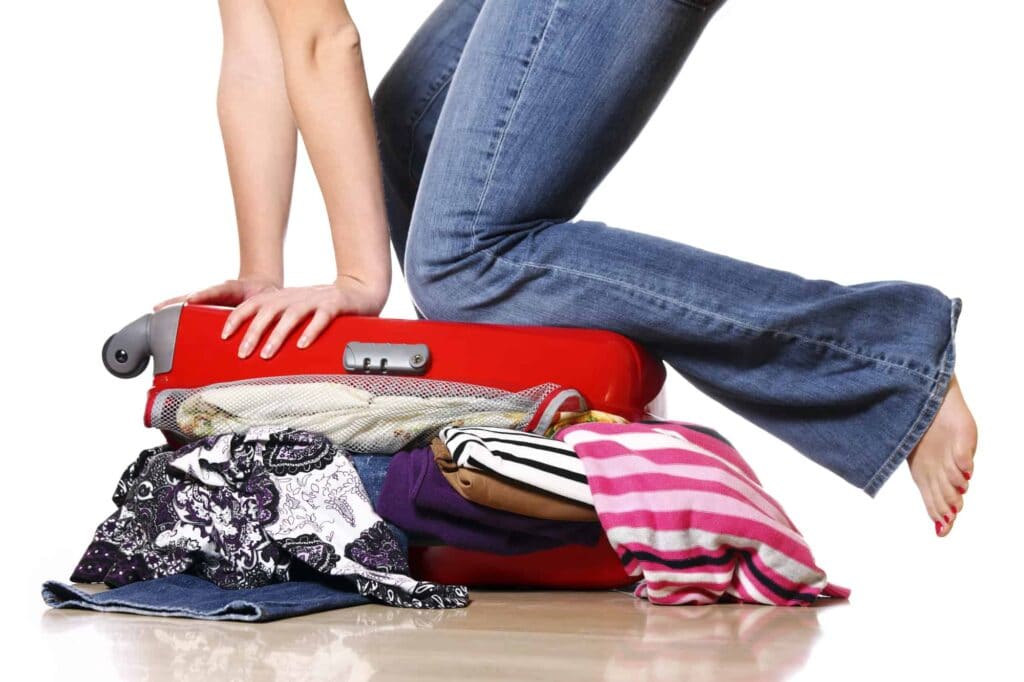
Plan to bring garments that work in multiple outfits
When you’re packing, think versatility: choose garments that can be mixed and matched to create multiple outfits. This strategy not only maximizes your clothing options but also minimizes the amount of clothing you need to bring. I begin by packing neutral-colored pants and then add variety with colorful tops.
Layering is your friend. It allows you to adjust to weather changes easily. For example, I rarely travel these days without my 3-in-1 fleece interchange coat. The outer layer is waterproof and the inner layer is thermal fleece. I can wear each piece separately or zipped together, so I have three different outerwear options in one.
Plan to do laundry
We’ve already touched on this briefly, but you can significantly reduce the amount of clothing to pack by planning to do laundry during your trip. If your trip is for more than a week or your itinerary includes diverse activities demanding different kinds of clothing or gear, laundry may be essential to your trip planning.
Here’s how you can make laundry part of your travel plans:
- I recommend that you prioritize accommodations that have laundry facilities. Vacation rentals or apartment-style motels with a washer and dryer available make it really easy to work a little washing into your day.
- Bring along a small laundry kit of a travel-sized detergent (Tide sink packs work great), a stain remover pen, and maybe a portable clothesline. You can hang garments to dry on the shower curtain rod or lay them flat on towels in your room, but make sure to wring them out first of course.
- Choose clothing made from quick-dry fabrics like synthetics or merino wool. They’re not only easier to wash on the go but also dry rapidly, so you can wear them again without waiting too long.
If you’re willing to do laundry while traveling, you can usually pack just a week’s worth of clothes, regardless of your trip length. Rotate outfits, washing as you go, to keep your bag light and manage your outfits efficiently.
Limit shoes
It’s a common mistake to pack a pair of shoes for every occasion. However, shoes can take up a significant amount of space in your luggage and add so much weight. Aim to pack shoes that are versatile and appropriate for multiple settings.
- For instance, a pair of waterproof hiking shoes can be used for both outdoor activities and general sightseeing.
- Bring dress shoes only if you plan to attend a formal event.
- A nice pair of flats might be enough to take you from day to night.
Remember to wear your bulkiest shoes during travel to save space. Keep it to an absolute maximum of three pairs of shoes (wearing one pair as you travel and having two in your luggage), but two is preferable, one is ideal.
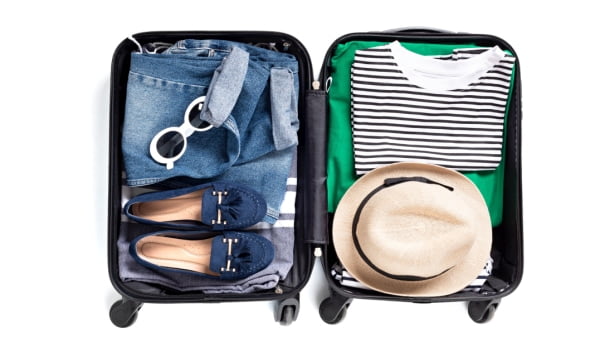
Give yourself permission to buy things on your trip if you need them
It’s natural to think you might need to pack for every possible situation (as impossible as that is). Keep in mind, you have the option to purchase items at your destination if needed. It’s okay not to be prepared for every scenario in one suitcase.
Whether it’s clothing appropriate for unexpected weather, or gadgets you find you need, give yourself permission to make purchases during your trip. This will save you the hassle of a heavy bag filled with things you’re unsure you will use.
You’ve already made your packing list, keeping it limited to items you absolutely know you need. For everything else, leave a little space in your bag and plan a little room in your trip budget for on-the-road purchases.
Plan room for souvenirs on your return trip
It’s easy to focus totally on what you’ll need while you’re away. But don’t forget to consider the space you’ll need for souvenirs on your return trip.
There are a few ways you can handle this. My preference is to simply leave a little space in my carry-on bag or personal item so that I can easily fit my souvenirs (which are usually pretty small).
Another option is to bring a spare empty tote bag with you to fill with souvenirs. On your return trip, that would become your carry-on bag in your overhead bin and then you would check your rolling suitcase.
Continuously re-evaluate your packing choices
When you unpack after a trip, consider which items you brought but never used. Use every trip as an opportunity to refine your packing skills and update your go-to packing list.
Did you pack items that you didn’t use, even though they were appropriate for the weather and your activities? Be honest with yourself, and use the lessons you learn each time you pack to help you get even better at it.
I hope these tips will help you stop overpacking. Smart packing is a key to stress-free travel. Overpacking weighs you down literally and mentally. By following the tips in this article, you’ll improve your travel skills, travel lighter, and move around more easily.
More help with packing
- The essential overnight trip packing list
- What to take on your flight in your carry-on
- Ultimate weekend getaway packing list
- Perfect day trip packing list
Pin this post!
